The Netherland Dwarf Rabbit is a compact, fun, and easy-to-train rabbit first recognized in Holland. Similar to the Holland Lop, this breed of dwarf rabbits is best for owners with a small space who want an entertaining and energetic pet to take care of.
Matching their tiny and cuddly features is their adorable and lively personality. Learn more about the Netherland Dwarf Rabbit on this page.
Breed Chart
Size | Dwarf |
Weight | 900 to 2.5 pounds or 0.50 to 1.13 kilograms on average |
Lifespan | Approximately 8 to 15 years |
Temperament | Lively, mettlesome, high-spirited, active, energetic |
Color | Orange on their sides and gray to black on their belly, ears, feet, and tail; Over 20 colors accepted by ARBA: Blue Tan, Black Silver Marten, Chinchilla, Tortoise Shell, Sable Point, Chocolate Himalayan, Lynx, Chestnut, Smoke Pearl Marten, etc. |
Rarity | Common |
Similar Breeds | Holland Lop, Mini Lop Rabbit, Lionhead Rabbit, Mini English Angora Rabbit, Columbia Basin Pygmy Rabbit, Britannia Petite Rabbit, Dwarf Hotot |
Best Suited For | Owners who love an energetic and mischievous rabbit, those with limited space and kids |
Background and History
Have you ever wondered how these tiny rabbits came about? Netherland Dwarf Rabbits’ history started with the discovery of the dwarf gene in the 1900s.
Then, a breeder experimented on using this dwarf gene to create small rabbits of varying breeds. From there, a group of breeders worked for thirty years to produce a standardized small rabbit accepted in different colors.
This group of five men used the dwarf gene to create smaller and smaller versions of rabbits until they reached their desired size.
After creating a standardized rabbit, they started to mate all-white Hermelin rabbits with local wild rabbits. They also included other domestic rabbits for breeding. It was in 1940 when this breed was finally accepted in the Netherlands.
But, the breeding developed even further during WWII. Breeders in the Netherlands started to distribute the remaining Dwarfs to several English Breeders.
For this reason, an organization named Netherland Dwarf Club was established in England. A year after the establishment of the group, the Netherland Dwarf Rabbit was recognized by the BRC or the British Rabbit Council.
Several years have passed, and the Netherland Dwarf Rabbit took its first steps in North America in 1965. The reason behind the Netherland Dwarf’s introduction to North America was to improve the breeding of Polish rabbits in the US.
Breed Size And Appearance
A Netherland Dwarf Rabbit is a miniature, pint-sized breed. It is one of the smallest variations of dwarf rabbits. The size of a Netherland Dwarf Rabbit perfectly complements its perky and energetic personality.
Its ears are evidently short, and its face is brachycephalic or rounded. The disproportion of the Netherland Dwarf Rabbit’s large eyes to its short and cobby body is apparent.
Size
Netherland Dwarf Rabbits weigh no more than 3 pounds and measure around 7 to 9 inches of total body length, which equals 19 to 23 centimeters.
Their shoulder height is approximately 5 to 6 inches or 12.5 to 15 centimeters. For comparison, they’re almost as tall as a standard soda can that averages 5 inches in height!
Coat
Netherland Dwarf Rabbits have short to medium fur. Their coat sheds only a little throughout the year, about once year-round.
Because of its short, silky, and soft fur, grooming these dwarf bunnies is not so hard to maintain. They may need subtle weekly grooming to ensure they do not fuss.
Color
Generally, Netherland Dwarf Rabbits are grouped into 5 varieties: Self, Shaded, Tan, Agouti, and Any Other Variety (AOV).
There are over 20 color variations of Netherland Dwarf Rabbits accepted by the ARBA or the American Rabbit Breeders Association.
The recognized color varieties include Chinchilla, Sable Point, Black Silver Marten, Chocolate Himalayan, Smoke Pearl Mountain, Chestnut, and a lot more.
A Netherland Dwarf Rabbit’s color is usually orange on its body extending towards the shaft and gray to black on its sides, feet, and ears.
Eyes
These dwarf rabbits have various eye colors ranging from brown, black, ruby, and blue.
Personality and Temperament
They might be small, but Netherland Dwarf Rabbits have enormous personalities. Netherland Dwarf Rabbits are the most active, vigorous, and high-spirited rabbits.
Contrary to their cute and cuddly face, Netherland Dwarf Rabbits have a wild temperament. Because they are very energetic, they might come off as rough and aggressive. In fact, the first Netherland Dwarf Rabbits were too hostile.
Sometimes, these bunnies may not be very happy when touched or picked up. They can get upset about cuddles occasionally.
But once you get along with them, they will most likely show their tamer, more gentle, and calmer side. These love balls can also get shy and skittish at times.
These bunnies get along with children well, and they’re easy to train too.
Food and Diet
Here is a list of what Netherland Dwarf Rabbit can eat safely:
● Green Vegetables
- Green lettuce (Romaine)
- Red leaf lettuce
- Raspberry leaves
- Basil
- Mint
- Chicory
- Parsley
- Swiss chard
- Wheatgrass
- Beet greens
- Bok choy
- Watercress
- Mustard greens
- Kohlrabi
● Vegetables
- Bell peppers (remove the seeds)
- Broccoli leaves and stems
- Zucchini squash
- Cucumber
- Brussel sprouts
- Cabbage
- Carrots with leaves
● Fruits and Treats
- Banana
- Apples
- Berries
- Pear
● Pellets
● Hay
There are other types of foods that your rabbit can eat that are not on the list.
Health Issues and Treatment
Like other rabbit breeds, the Netherland Dwarf Rabbits are likely to have particular health risks.
Respiratory Tract Issues
Because of their size, these miniature bunnies are prone to certain respiratory tract disorders, like other small breeds.
The roots of Netherland Dwarf Rabbits’ upper teeth are located right below their sinuses. If these teeth become inflamed or infected, the infection might affect the sinus, spreading the Pasteurella bacteria to their respiratory system.
Symptoms of respiratory tract infection in dwarf rabbits include rapid breathing, runny nose, and coughing. The infection usually resolves with a course of antibiotic therapy.
Dental Diseases
Rabbits’ teeth constantly grow throughout life. Netherland Dwarf Rabbits can grow excessively large molars.
To compensate for the continuous growth, they need to have plenty of hay intake as part of their daily dietary plan. Hay wears down the teeth, making them sustain their length.
Because Netherland Dwarf Rabbits’ heads are small and they have a slightly longer jaw, they are at risk for mandibular misalignment issues, resulting in a protruded lower jaw.
The most common dental diseases for dwarf rabbits are dental wear and gigantic elongated teeth. It is important to know that these dental concerns can lead to weight loss and digestive problems.
Veterinarians may inject anesthetic solutions while treating misaligned jaws to improve your bunny’s dental health.
Mites
Mites are a common issue of rabbits. Cheyletiella mites cause itching and patterns of hair loss. To solve this, anti-mite preparations can be applied.
Another parasite of concern is the E cuniculi, which is from contaminated urine. Symptoms of parasite invasion are excessive thirst, head tilt, and leg paralysis. To manage these symptoms, worming treatments are prescribed by vets.
Hemorrhagic Disease
Rabbit hemorrhagic disease is a viral infection that is often fatal. Symptoms of this disease include anorexia and fever. Hemorrhagic disease is preventable by vaccination.
Myxomatosis
Myxomatosis is a quick-spreading viral disease. This causes puffy eyelids and conjunctivitis. If a Netherland Dwarf Rabbit contracts this, pus can be seen covering its eyes. The pus usually spreads throughout the body.
Myxomatosis can be prevented by vaccination.
Care Sheet
Cage Size and Type
While they’re compact and tiny, Netherland Dwarf Rabbits need plenty of room to stay and live in. A minimum of 18×24 inches cage with a height of 14 inches is recommended by pet experts.
Another good option is a cage measuring 4x2x2 feet. This encourages the tiny furballs to exercise and play. You can use hay or straw as beddings.
Besides the adequate cage size and the right bedding, Netherland Dwarf Rabbits need a clean home. Ensure that you regularly scrub your rabbit’s cage once a week.
Nutrition and Diet
Netherland Dwarf Rabbits are plant eaters (herbivores). Their diet should comprise mostly of hay and grass, pellets, clean water, and vegetables.
Feeding Newborn Netherland Dwarf Rabbits
Extra care must be observed when feeding baby Netherland Dwarf Rabbits. These baby bunnies nurse from their mothers during the first few weeks of life. At around four weeks, they may start to nibble on pellets.
Rabbits may wean from their mother at seven weeks and start eating pellets and drinking water in moderation.
Feeding 4 to 7-month-old Netherland Dwarf Rabbits
Introduce vegetables in small amounts, one by one, at this age. Do not give foods instantly to prevent digestive system problems.
Everything should be given in moderation. Note that the gastrointestinal tract of a Netherland Dwarf Rabbit is delicate, especially when it is still months old.
Feeding Older Rabbits
As the Netherland Dwarf Rabbit matures, some adjustments to its diet should be made. Fruits can be introduced as treats at this age, following the recommended serving of 1-2 tablespoons per 5 pounds of a rabbit’s body weight.
Grooming
Netherland Dwarf Rabbits require low maintenance when it comes to fur grooming. Their short and soft coating needs regular brushing and trimming weekly.
It’s very important to know that you do not need to groom them so much. This is because, in some seasons, Netherland Dwarf Rabbits’ fur falls off. Excessive grooming will do more harm than good.
The suggested practice is to brush your rabbit’s coat often. Brushing dwarf rabbits’ fur helps keep its cleanliness and appearance.
Other Fun Facts About the Netherland Dwarf Rabbit
1. They are easily trainable, like cats and dogs
Netherland Dwarf Rabbits are intelligent breeds of rabbits. In fact, they are the third most intelligent pets in the world! They can easily be trained just like your pet cat or dog.
Netherland Dwarf Rabbits can perform tricks after you train them well. With time, dedication and patience, you’ll be happy when they do tricks after tricks!
Reward them after every achievement. You can feed them fruits like apples and bananas. Just be sure they take it in moderation.
2. They store so much energy
They might be small, but Netherland Dwarf Rabbits can store huge amounts of energy in their compact bodies!
Size doesn’t matter when it comes to this breed. As they say, Netherland Dwarf Rabbits are small but terrible. They have plenty of energy to exercise, jump, run around, and hop.
3. They love to play with toys.
Netherland Dwarf Rabbits can have more energy for playtime than you do. You might find it hard to catch up on their never-ending jumping and running around.
For them to stay active, it’s a nice idea to shop for rabbit-safe toys. You can give your pet toys to play with and nibble on.
Your Netherland Dwarf Rabbit will most definitely enjoy rattan balls, hanging chew toys, activity tables, and puzzle boards. These toys will serve as their avenue to release energy.
4. They can live both indoors and outdoors
Netherland Dwarf Rabbits can easily adapt and adjust to their environment. They can live inside or outside of your home.
What’s important for Netherland Dwarf Rabbits is for them to have a big area where they can sleep, play, eat, and go potty.
5. They are the smallest rabbit breed
Of all domestic rabbits, Netherland Dwarf Rabbits are considered the world’s smallest rabbit breed.
Next to this breed is the Dwarf Hotot, weighing 0.91 1.36 kilograms. The third one is the Jersey Wooly, which weighs about 1.1 to 1.6 kilograms. The other smallest rabbit breeds are the Lionhead Rabbit, American Fuzzy Lop, and Holland Lop.
Summary
The Netherland Dwarf Rabbit is a small, pint-sized bunny that requires not much maintenance. Their soft and silky fur just needs a little brush from time to time to make them happy.
The Netherland Dwarf Rabbit may look cute and jolly. However, they sometimes get upset about hugs and cuddles. But once you get by, they’ll love all things clingy!
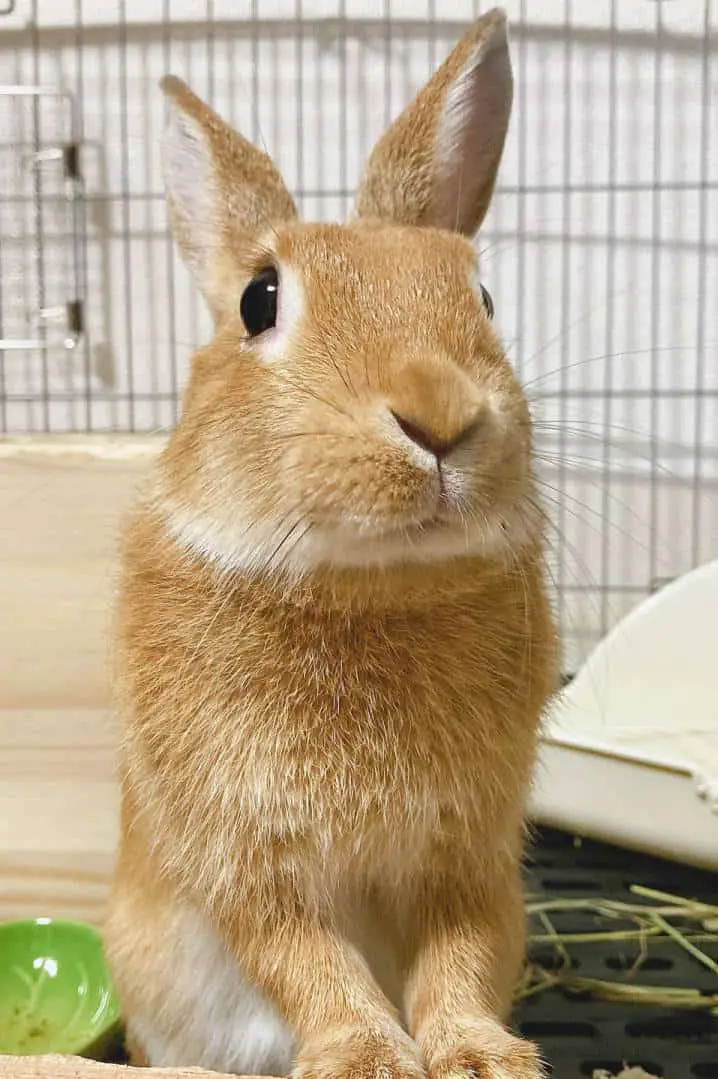
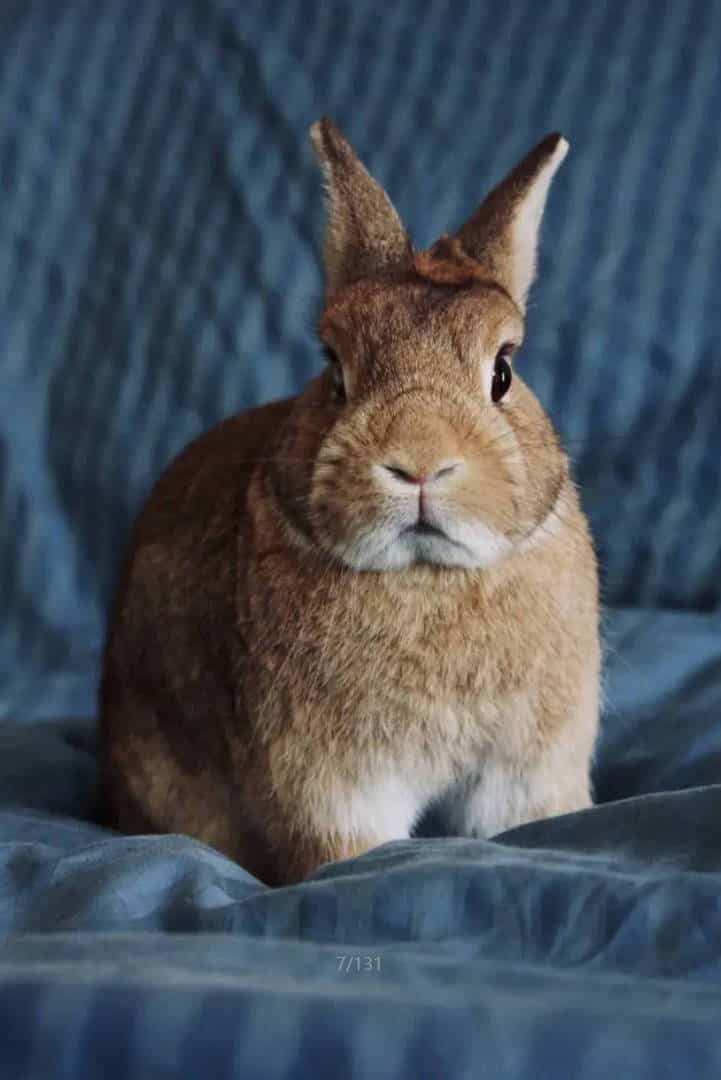
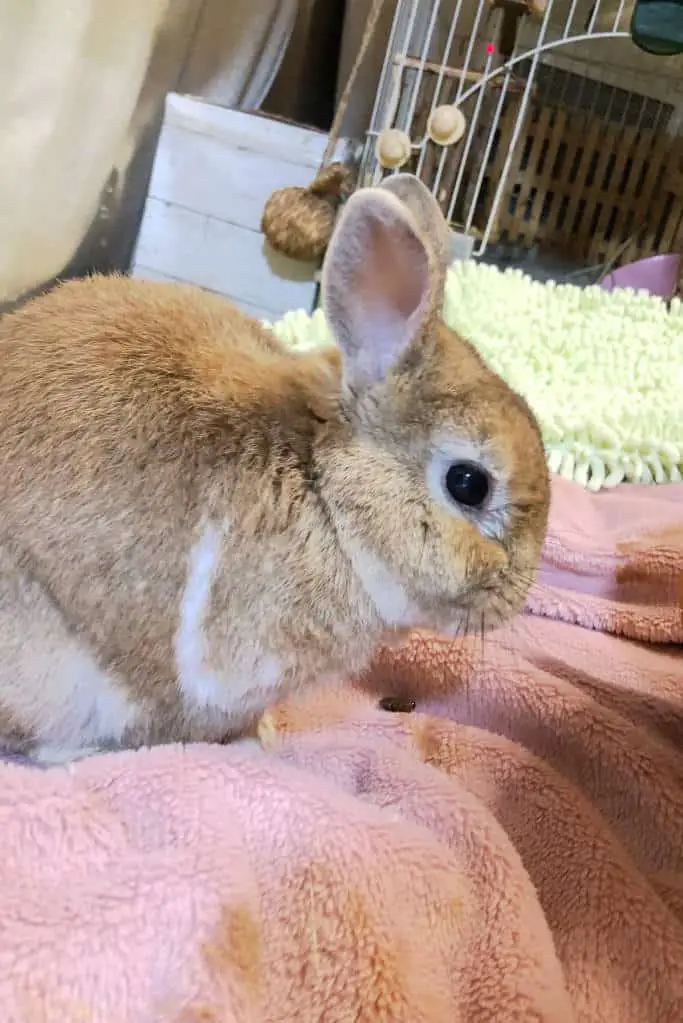
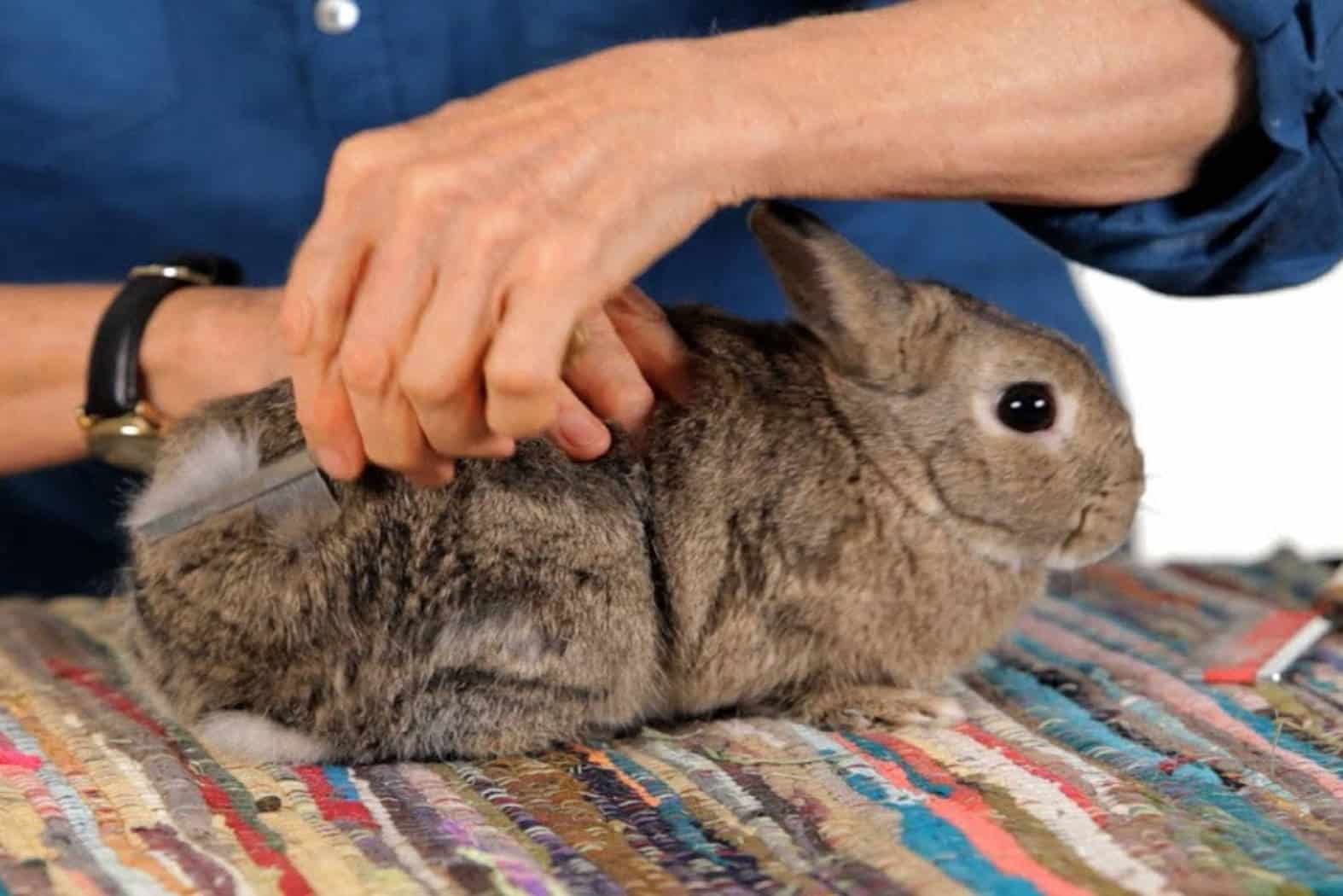
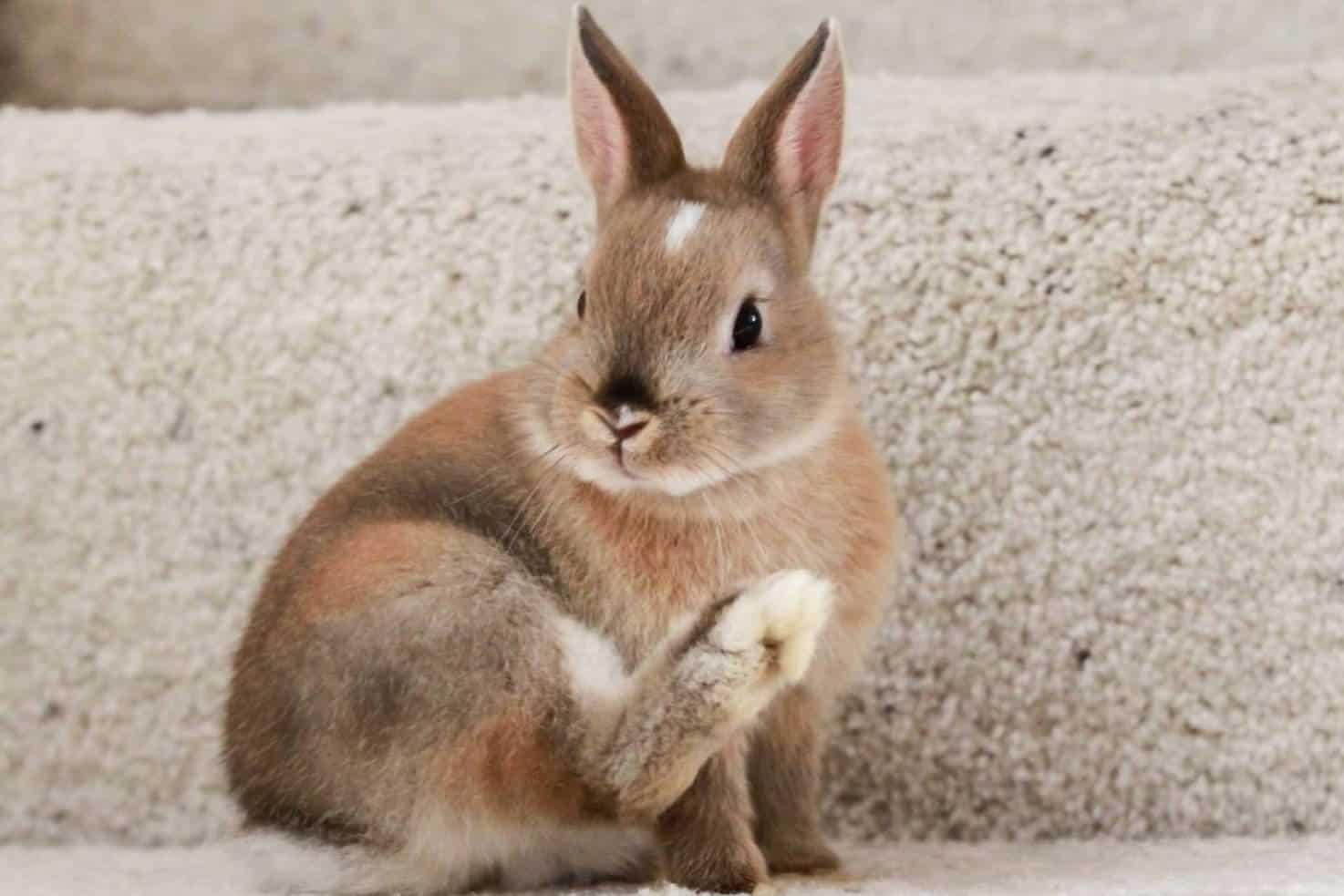
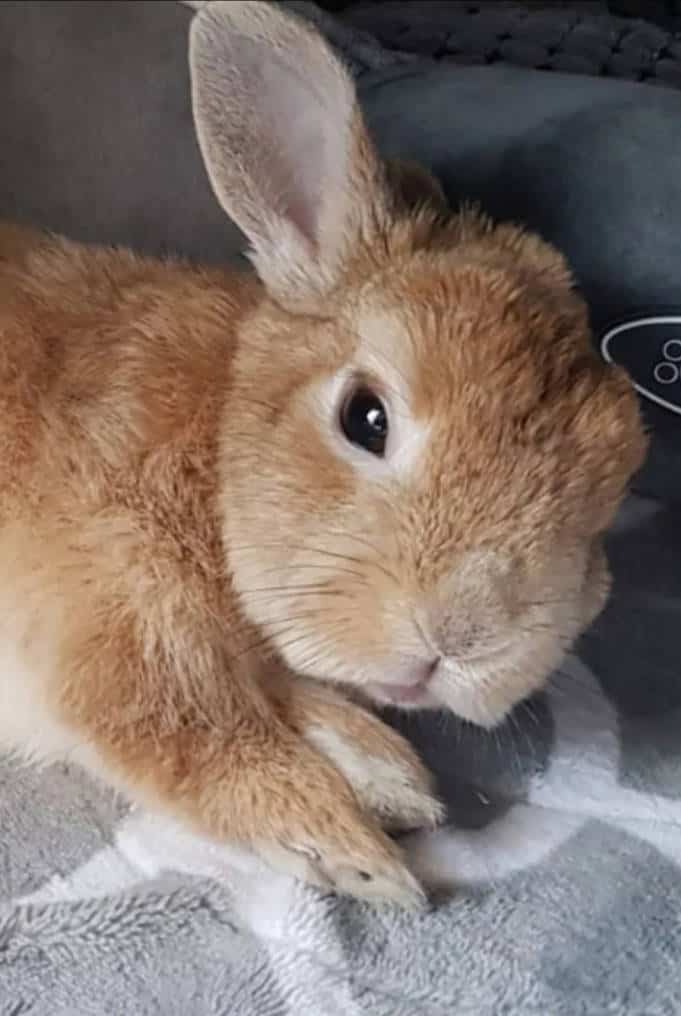
Can they be litter trained?
Hi Becky,
Yes, Netherland Dwarf Rabbits can be litter trained. They are intelligent creatures and can be taught to use a litter box fairly quickly. Start by observing their preferred corner for doing their business in the cage. Then, place a litter box in that corner. You can add some of their droppings to the litter box to help them understand its purpose. Always remember, patience and positive reinforcement work best when training.